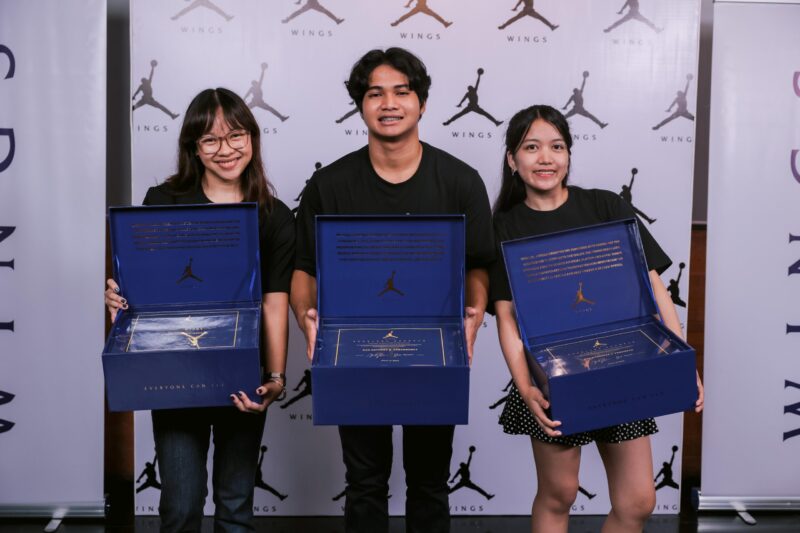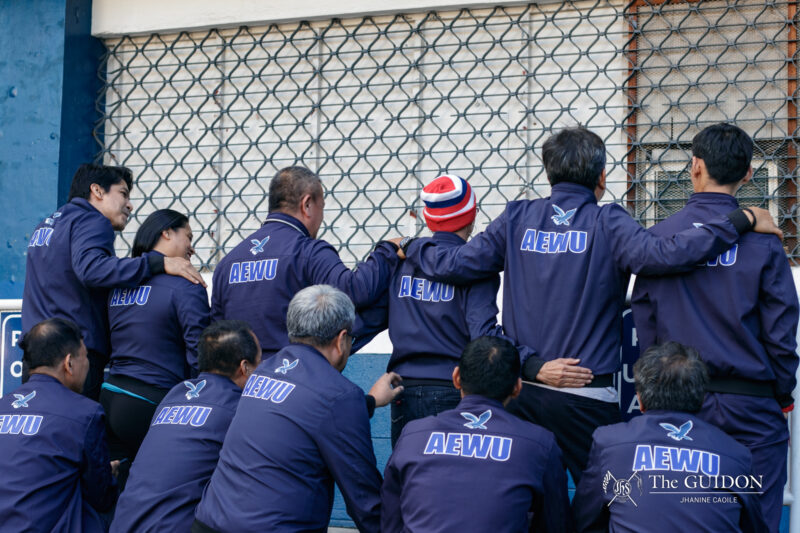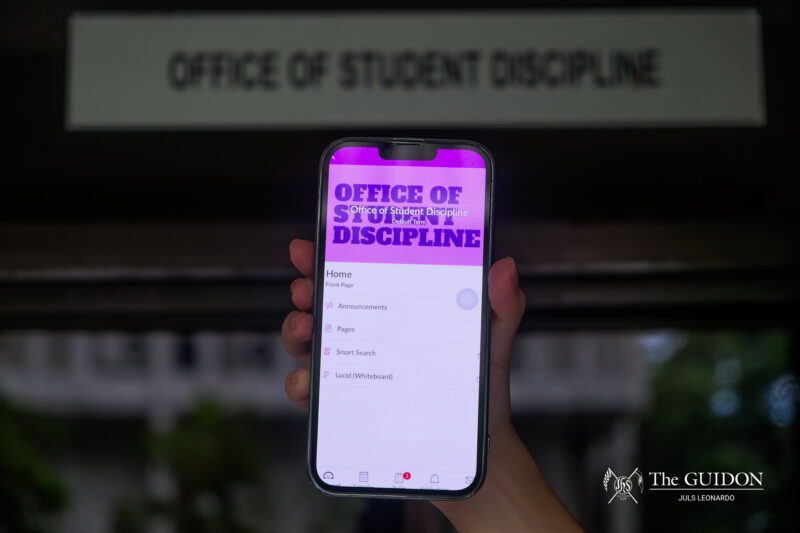THE ATENEO Environmental Science Society (AESS) urged students to become more involved in environmental sustainability during the Ecology Camp (Eco Camp) held on January 24 at the Ricardo and Dr. Rosita Leong Hall auditorium.
The AESS promoted involvement by providing a model for sustainability through the university’s own efforts, raising awareness on the impact of global warming on the country and discussing the proper implementation of sustainability projects.
The Eco Camp is an annual program of the AESS, an accredited organization under the Council of Organizations of the Ateneo’s Health and Environment Cluster, that gathers high school students from Metro Manila to engage in a series of environmental sustainability talks.
According to Project Head Michael Ubamos, Eco Camp aimed to foster environmental awareness and initiative in students as early as high school.
“We really wanted the younger generation to really know how to jumpstart, even in their own little ways, [becoming] environmentally responsible,” Ubamos said.
The Eco Camp concluded with each high school’s proposal of what AESS dubbed as an “original, innovative and Earth-saving idea.”
The participants were also given an opportunity to consult with the Ateneo Institute of Sustainability (AIS) Director Assunta Cuyegkeng, PhD and former environmental consultant Jerome Rodel on their proposals.
The AIS serves as a center for efforts toward environment and development, one of the 10 strategic goals of University President Jose Ramon Villarin, SJ upon his appointment in 2011.
Collaborative effort
AESS Moderator Abigail Favis presented Ateneo’s sustainability efforts as a model for sustainability in the school setting.
Recalling the Ateneo’s rural setting when it transferred to Katipunan Avenue in 1954, Favis shared how the university has adapted in terms of keeping up with urbanization while protecting the environment.
“[This beginning is] something that we remember with nostalgia, bringing back that sense of peacefulness and closeness with the environment even now that [the university is] very urbanized,” Favis said.
Favis reported that only 30% of the Ateneo’s 86-hectare area has been urbanized, signifying the university’s commitment to preserving natural areas like forests and grasslands.
However, Favis recognized the difficulty of managing the university’s large area given its total population of 18,000, which includes both students and faculty members in the grade school, high school and Loyola Schools.
Favis remarked that the implementation and management of environmentally friendly projects in the Ateneo is easier with Villarin, an atmospheric physicist and climate change scientist, as university president.
“One of the advantages that we have here is our administration is really prioritizing the environment, and that means that [they think] of innovative and exciting ideas to implement on our campus,” Favis said.
She added that the sustainability programs are meant to be participatory, consultative and integrative, which call for the collaboration of the entire Ateneo community.
“Getting the support from the community is a very important step. We have to make sure that the campus itself is a demonstration laboratory,” Favis said.
Favis mentioned the current programs promoting environmental sustainability currently implemented in the campus: Ecological solid waste management, water and energy conservation, pollution prevention, electric jeepneys and the electric vehicle charging station, traffic regulation, environmental science organizations, health and nutrition programs, and environmental sustainability research.
“[These programs] are under the three spheres of influence namely the formation of health and well-being, the restoration of the ecology and the utilization of resources,” she said.
Truth behind global warming
Philosophy Department ChairAgustin Rodriguez, PhD discussed the causes and possible implications of global warming to third world countries like the Philippines, which provide a signal to increase sustainability efforts.
He mentioned the crises that the world may face in the near future as a result of global warming including shortages in petroleum, water and tap soil.
Rodriguez explained that the massive contribution of first world countries to global warming is inversely proportional to the minimal impact they will experience.
Third world countries, however, will suffer the most despite their minimal contribution to global warming.
Rodriguez pointed out the lack of initiative from first world countries to change their respective production rates, the most dominant contributor to global warming.
“Kung bababagsak ang produksyon, babagsak ang buong ekonomiya [ng mga first world countries] (If production of first world countries fall, their entire economies fall),” he said.
Rodriguez sees the impact of global warming as a signal to end environmentally destructive habits, such as mass production and consumption.
He also depicted eradicating global warming as a laboratory process of the youth, wherein results do not come immediately. “Research, train yourselves and go back to your culture.”
Project implementation
Cuyegkeng provided the framework for starting and implementing sustainability projects.
She explained that sustainability projects are difficult to implement because of the inconvenience they cause.
“It’s hard to implement environmental initiatives [in our communities] because it affects the habits of our community members,” Cuyegkeng said in a mix of English and Filipino.
She cited how the Ateneo’s efforts to remove disposable cups made from Styrofoam and plastic in 2008 was initially received negatively due to the inconvenience of alternatives like baunans and utensils with deposit.
However, due to proper project implementation and awareness campaigns from students, the “Bring your own baunan” and deposit system for borrowed utensils are now part of the Atenean lifestyle.
Cuyegkeng emphasized four major points in forming a sustainability project proposal: Designing the activities to be done, identifying the resources needed, clarifying the people in charge of implementation and determining the project’s time frame.
She believes that considering these points when proposing a sustainability project will clarify the project’s subsequent impact on the community and ensure better outcomes from the project’s implementation.







